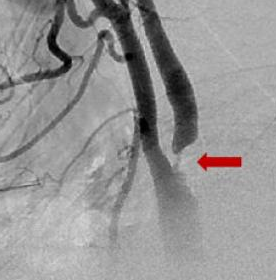Carotid artery occlusion refers to the blockage or narrowing of the carotid artery, which is one of the major arteries supplying blood to the brain. This condition is often caused by atherosclerosis, a buildup of plaque in the artery walls, which can lead to the formation of a blood clot that completely blocks blood flow.
Right & Left internal carotid artery occlusion
Internal carotid artery occlusion is a serious medical condition that can cause significant morbidity and mortality. The internal carotid arteries are two of the major arteries that supply blood to the brain, and their occlusion can lead to a reduction or complete loss of blood flow to the affected side of the brain.
When both the right and left internal carotid arteries are occluded, it is called bilateral internal carotid artery occlusion. This is a rare condition but can lead to severe neurological deficits and disability.
The symptoms of bilateral internal carotid artery occlusion can include a sudden loss of consciousness, seizure, or stroke-like symptoms such as weakness or numbness on one side of the body, difficulty speaking, or vision changes.

Symptoms
- Sudden onset of weakness or numbness on one side of the body, face, or limbs.
- Difficulty speaking or understanding speech.
- Vision changes, such as double vision or partial or complete loss of vision in one eye.
- Sudden, severe headache, especially in the absence of a known cause.
- Dizziness or loss of balance.
- Difficulty with coordination or walking.
- Confusion, disorientation, or memory loss.
- Loss of consciousness, seizure, or coma.
Causes
- Blood clots or emboli that form in other parts of the body and travel to the brain, blocking the internal carotid artery.
- Inflammation or infection of the artery, such as in the case of temporal arteritis.
- Trauma or injury to the artery, such as a carotid artery dissection.
- Congenital abnormalities of the artery, such as fibromuscular dysplasia or arterial tortuosity syndrome.
- Rare genetic conditions that affect the structure or function of the artery, such as Ehlers-Danlos syndrome.
- Radiation therapy to the neck or head, which can cause scarring and narrowing of the artery.
